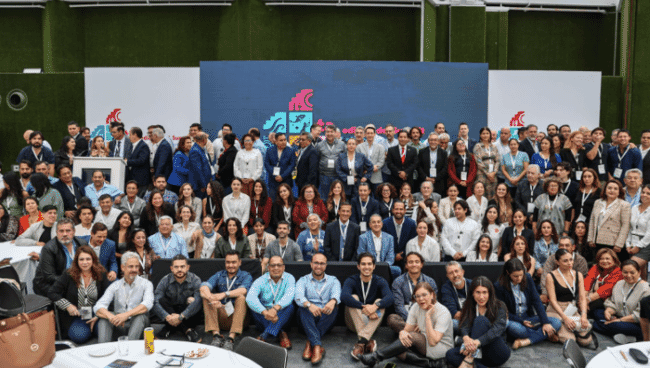
© The Good Group
The summit was organised by the Mexican Council for the Promotion of Wild and Aquaculture Seafood (COMEPESCA) and #PescaConFuturo, an initiative that links producers, traders, restaurants and consumers to adopt a collective commitment to sustainability.
In Latin America, aquaculture - mainly in ponds and intertidal zones - has an important role to the livelihoods of coastal communities (FAO, 2022). The challenges for small-scale farmers have a lot to do with regulations as it is hard to talk about best practices if the issue is staying afloat.
“If you are starting out in aquaculture, and if you don't have much knowledge and your cost is high, if you are still here in a year, you did very well. We have very good intentions, we want to boost aquaculture, but we have conflicting policies,” said Álvaro Alejandro Zacarías, from Artifiseas.
“The regulations are the same for the big one as for the one who has a small cage, there is no incentive for them,” Juan Carlos Lapuente, aquaculture research director for the Mexican Institute for Research in Sustainable Fisheries and Aquaculture (IMIPAS), pointed out.
Collective efforts throughout the supply chain
The responsibility to provide sustainable seafood requires collaboration among all the stakeholders along the entire supply chain. Sustainability challenges are also encountered by last-mile distributors, and one approach to tackle them is through strategic alliances, such as Sea Pact, a group of 11 companies in North America enhancing stewardship and development throughout the seafood supply chain.
Sam Grimley, executive director, talked about their strategy to meet sustainability commitments: they identify key challenges for key species focusing on what can make the greatest impact, depending on their business operation; encourage innovation that supports more production of responsible aquaculture; and share best practices and engage with the supply chain in meeting the right due diligence. Grimley also underlined how these efforts should be strongly linked with market feasibility: “if it doesn't make sense to your business, then it would be unendurable and it won't last.”
Up the supply chain, hotels and restaurants play a lead role in advocating for sustainable seafood; menus have the power to put a spotlight on certain products, driving its demand and shaping culture through gastronomic offerings. As is the case of Spanish Grupo Iberostar, they are betting on “applying a more holistic and exhaustive vision of [their] responsible fish and seafood purchasing policies, considering the social and economic dimension,” said Yago Doson Coll, their blue foods specialist.
Strategies for Latin America’s blue food ecosystem
Discussions around market alternatives and strategies to equate profit to long-term ecological balance included educating consumers, engaging supermarkets, refining public policies, and even expanding to new industries, such as seaweed farming.
As Karlotta Rieve, project manager for regenerative aquaculture at Hatch Innovation Services, explained, there is a “great potential for different types of seaweed in Latin America, which can contribute to environmental sustainability by balancing water chemistry and creating habitats in ecosystems. In addition, they offer commercial opportunities in healthy foods and innovative products, while representing an additional source of income compatible with marine activities such as fishing and tourism”.
On the subject of innovative products, non-food industrial seaweed applications present a profitable opportunity to Mexico and Caribbean countries. As Paulina Zanela, COO of Thalasso, observed: “Sargassum should be considered a fishing resource with the potential to drive a new source of economy, based on the sustainable use of marine resources.”
One unifying idea from the summit stood out among others: the need for collaboration from all stakeholders across the blue food sector.
As Anna Molina Marsiske, legal representative to Regal Springs in Mexico, reflected: “As farmers, we must unite. As a sector, we have to come forward with our same challenges and our same dynamics to be able to defend ourselves, help ourselves and support ourselves”.
Ultimately, market for and constant supply of seafood cannot exist without each other. As Alejandro Castillo, senior program officer for Innovaciones Alumbra, concluded: “Nobody wants the business to end, nobody wants the fishing and aquaculture to end, that's why we need the oceans to stay healthy”.

